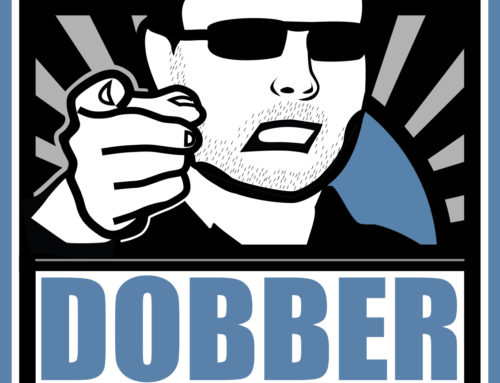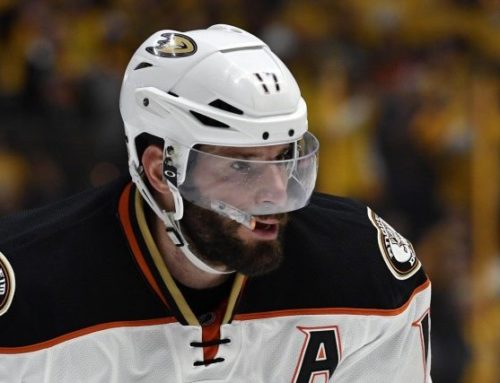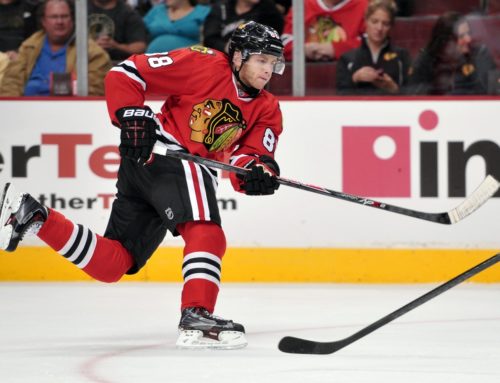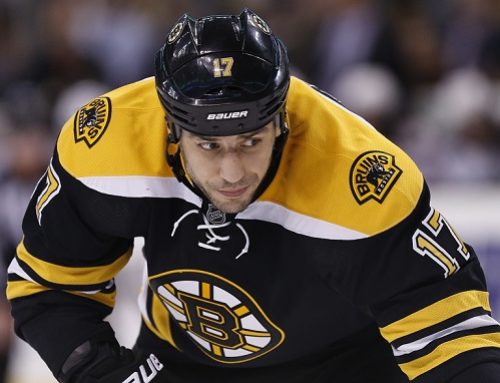
In sports, numbers rarely tell the entire story. In hockey, this is especially true. It is hard to quantify some aspects of such a fast-paced, fluid game. In fantasy sports, numbers ARE the story. Unless a formula to quantify things like heart and determination is developed, don't expect this to change. In fantasy hockey, a 50-point player is superior to a 40-point player by exactly 10 points. In real hockey, the 50-point player may be lazy, overpaid, short, tall, fat, thin, weak, and strong… I think you get the picture. However, there are often reasons why that player is scoring 50 points as opposed to 40. How much ice time is he getting? Who are his linemates? What kind of role is he playing on his team? These are some of the questions I will answer.
Pavel Datsyuk
After back-to-back 97 point campaigns in 2007-08 and 2008-09, most in the hockey world assumed the slick Datsyuk was a lock for another elite offensive season. Perhaps another 97 point season? Datsyuk, however, is currently on pace for only 65 points. Why?
The Red Wings have battled significant injury issues all season, and that is most likely the biggest reason for the offensive decline of Datsyuk. He hasn't been playing with the same level of talent compared to just a year ago, and that has hurt his production. Another factor that has had a negative effect on Datsyuk, and Detroit as a whole, has been the fact that the team has played a ton of hockey over the past three seasons. In 2008 they battled all the way to the Western Conference Final, and they have been in the Stanely Cup Final each of the past two seasons. In those three years, Datsyuk has played an average of 100 hockey games, including the postseason. The wear and tear from the sheer number of hockey played is another contributing factor towards Datsyuk's offensive slump this season.
Looking at linemates, Datsyuk has gone from playing mostly with Marian Hossa and Tomas Holmstrom last season to Todd Bertuzzi and Holmstrom this season. No slight to Bertuzzi, but at this stage of his career he is a far cry from playing at the same level as Hossa.He has played with Henrik Zetterberg for stretches since being in Detroit, but Mike Babcock often seperates them to balance out the offensive attack.
Datsyuk fired 248 shots on net last season. The year before, his shots on goal total was 264. This season, he is on place for just over 200. In simple terms, more shots means more goals. Datsyuk has hit the 30 goal mark in each of the past two seasons, but is only on pace for 21 in 2009-10. He is playing 20:27 per game, consistent with his time on ice in recent years. His power play time is almost identical to last season (3:26 per game this season compared to 3:23 per game in 2008-09).
Looking at all of the contributing factors, Datsyuk's slump is attributable to a depleted Detroit team, as well as fatigue. Expect him to bounce back in 2010-11, especially if the Wings fail to play deep into the spring this postseason.
Brad Boyes
It took Boyes five years before he produced at the level that the Toronto Maple Leafs expected when they used their 1st round selection on him in 2000 – too bad he was a member of the Boston Bruins at that point. After coming to St. Louis from Boston, Boyes quickly established himself as the Blues most dangerous scorer. He had 43 goals in his first full season with the team in 2007-08. The next season, his scoring total dipped to 33, but he upped his overall production from 65 points to 72. Boyes was a fringe contender to make Team Canada's 2010 Olympic squad heading in to the 2009-10 season, but scoring at a 14 goal pace quickly erased any thoughts he may have had of donning the Canadian sweater.
As a team the Blues have been a major offensive disappointment this season, as their young talent has struggled as a whole to take a positive step forward. A defensive core lacking in talent hasn't helped. Aside from Erik Johnson, who is still very raw, the Blues lack a puck mover on the back end.
Looking at the numbers for Boyes, nothing stands out as definite factor contributing to his slump. He is on pace for 205 shots. Last season he fired 220 on net, and during his career season in 2007-08 he took 207. He is playing just over 17 minutes per game, which is about two minutes down from last season. Not coincidentally, his power play time has dipped by about a minute. Less power play time obviously has hrut his proudction somewhat, but he is still seeing over three minutes per game with the man advantage. The biggest issue with Boyes has been his inability to find the back of the net. He is playing enough quality minutes to produce. He is shooting the puck at a similar pace to his strong seasons in the past. While the shots on goal statistic can often be misleading, Boyes has made the one-timer on the power play his bread and butter and he has done the same this season (without the same impact, obviously).
His future with the Blues could be viewed as cloudy. His place as a part of their core for the future is uncertain, but he is an important part of the team now. Do they move in order to add a defenseman? There have been a Boyes-to-Pittsburgh rumours in the past, and playing with a center like Crosby would obviously have a significantly positive impact on his numbers. If he does end up sticking in St. Louis, Boyes makes for a good buy low candidate. He is young and talented, and has proven he can produce.
Brenden Morrow
Did Morrow peak offensively with his 32-goal, 74-point season in 2007-08? Yes. Let's figure out why.
Firstly, Morrow sustained a very serious knee injury last season, causing him to miss all but 18 games of the season. In those 18 games, he scored five times and added 10 assists. This season, Morrow is on pace for only 20 goals and 44 points. Watching him play, it is obvious to see that he has lost a step with his skating. Another factor contributing to his offensive decline is the rise of three young wingers in Dallas – Jamie Benn, Loui Eriksson, and James Neal. All three are more offensively gifted then Morrow, and are being given some of the minutes on the power play that Morrow used to receive. He is playing 3:25 per game on the power play after seeing over four minutes per contest in each of the past two seasons.
Finally, and perhaps most importantly, has been the effect of an underwhelming and injured Mike Ribeiro in 2009-10. Morrow really took off once Ribeiro was acquired from Montreal and subsequently placed on his line, and it shouldn't come as a surprise that his offensive struggles have coincided with Ribeiro's. Morrow has played most of the season with Jamie Benn opposite him on the right wing, but his centers have changed constantly. In addition to Ribeiro, he has also lined up with Steve Ott, Tom Wandell, and Mike Modano. Not exactly scrubs, but no one close to the level of Ribeiro either.
Morrow has peaked offensively due to the reasons outlined above. Don't expect him to be a 70 point player again. A combination of a serious injury, a change in role, and a struggling linemate have led to the slump he is currently in. Expect a return to the 25 goal mark next season.
Thomas Vanek
The surprising Buffalo Sabres have had a terrific season for numerous reasons. The amazing play of goaltender Ryan Miller is one. The fantastic season from rookie Tyler Myers is another. A healthy Tim Connolly, who has been the offenisve catalyst for the team all season, has also contributed to Buffalo's success. Thomas Vanek, on pace for 24 goals, has obviously been a positive factor, but most were expecting at least 35 to 40 goals out of him this season.
Like Morrow, the struggles of one of Vanek's longtime linemates contributed to his struggles. Derek Roy is on pace for only 56 points, 14 less than he had last season. Vanek has only lined up with Connolly about 10 percent of the time. He is even playing with rookie Tim Kennedy more then that. He is playing about half a minute less compared to last season, and is on pace for 18 less shots. He is playing a shade over 3:30 on the power play per game, down about 20 seconds from his average over the past two seasons.
Vanek is one of the best pure goal scorers in the league. His hand eye coordination is matched by few around the league, and because of this he has been so deadly on the power play throughout his career. Until Buffalo adds a legitimate power play quarterback, either by developing one or through trading/free agency, don't expect Vanek to reach his upside. Some believe he could be a 50 goal scorer in the right situation. Whether Myers or Chris Butler develop into Buffalo's future power play quarter back remains to be seen, but expect Vanek to bounce back next season. Both he and Derek Roy are too young and talented to have already peaked offensively.





 TOR
TOR S.J
S.J ANA
ANA EDM
EDM CAR
CAR DET
DET CGY
CGY VAN
VAN BOS
BOS MIN
MIN
